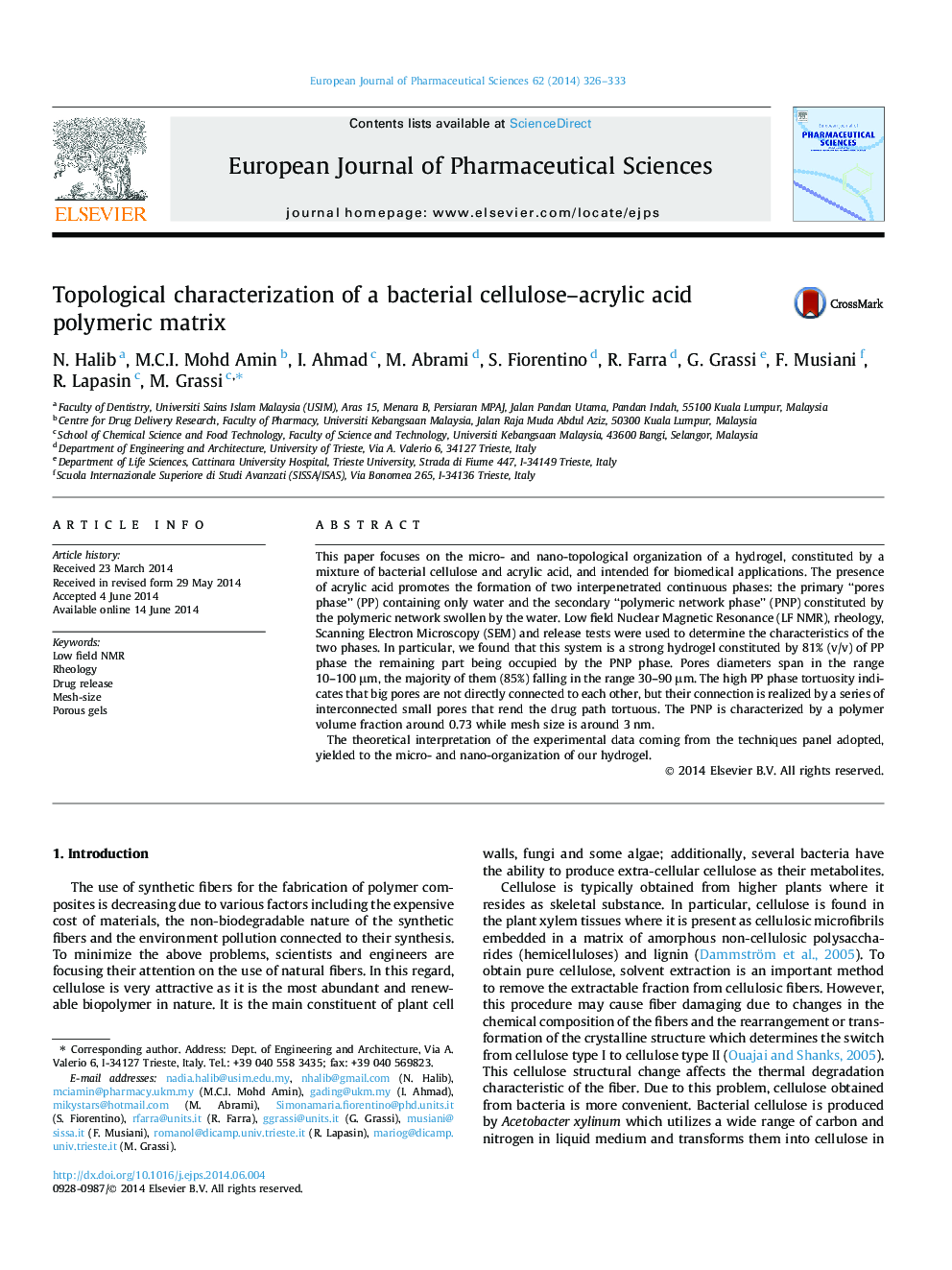| کد مقاله | کد نشریه | سال انتشار | مقاله انگلیسی | نسخه تمام متن |
|---|---|---|---|---|
| 2480411 | 1556188 | 2014 | 8 صفحه PDF | دانلود رایگان |
This paper focuses on the micro- and nano-topological organization of a hydrogel, constituted by a mixture of bacterial cellulose and acrylic acid, and intended for biomedical applications. The presence of acrylic acid promotes the formation of two interpenetrated continuous phases: the primary “pores phase” (PP) containing only water and the secondary “polymeric network phase” (PNP) constituted by the polymeric network swollen by the water. Low field Nuclear Magnetic Resonance (LF NMR), rheology, Scanning Electron Microscopy (SEM) and release tests were used to determine the characteristics of the two phases. In particular, we found that this system is a strong hydrogel constituted by 81% (v/v) of PP phase the remaining part being occupied by the PNP phase. Pores diameters span in the range 10–100 μm, the majority of them (85%) falling in the range 30–90 μm. The high PP phase tortuosity indicates that big pores are not directly connected to each other, but their connection is realized by a series of interconnected small pores that rend the drug path tortuous. The PNP is characterized by a polymer volume fraction around 0.73 while mesh size is around 3 nm.The theoretical interpretation of the experimental data coming from the techniques panel adopted, yielded to the micro- and nano-organization of our hydrogel.
Figure optionsDownload high-quality image (100 K)Download as PowerPoint slide
Journal: European Journal of Pharmaceutical Sciences - Volume 62, 1 October 2014, Pages 326–333
